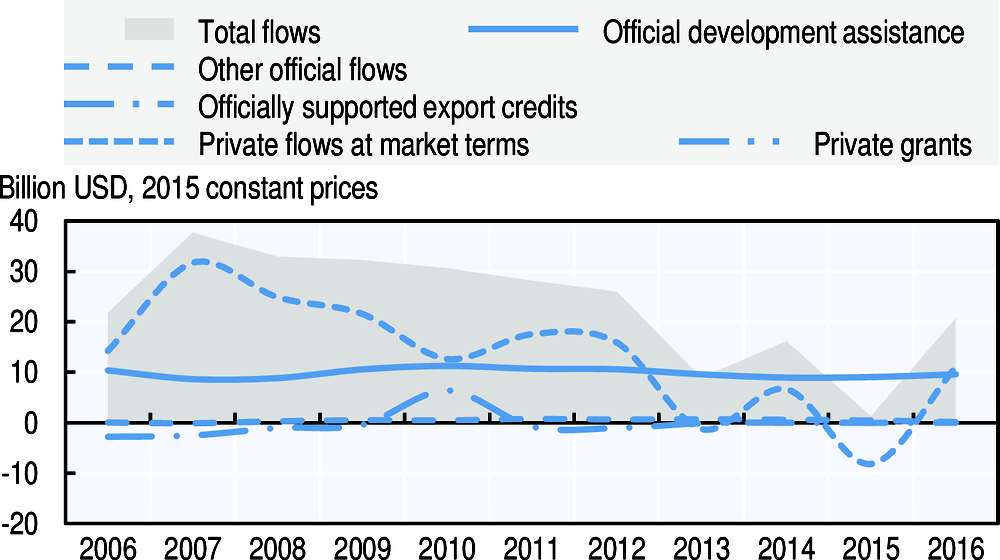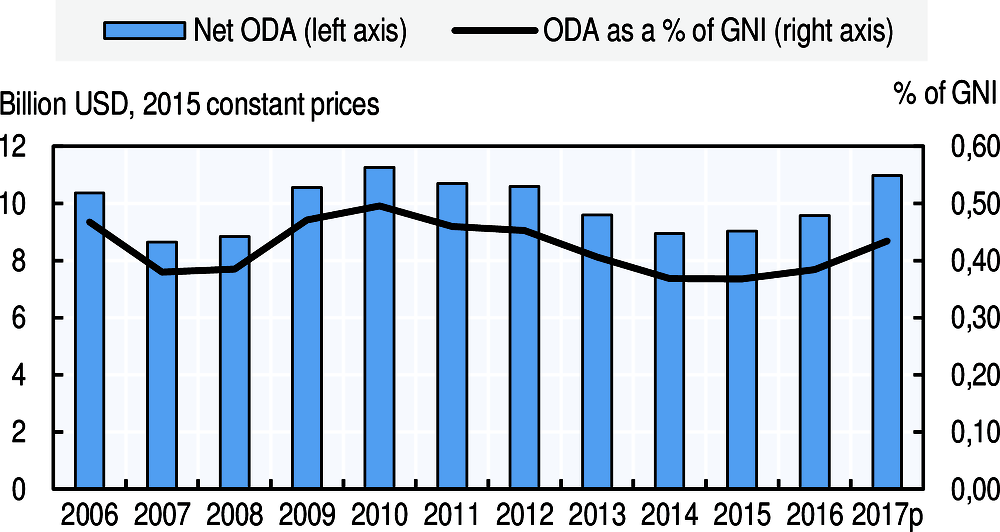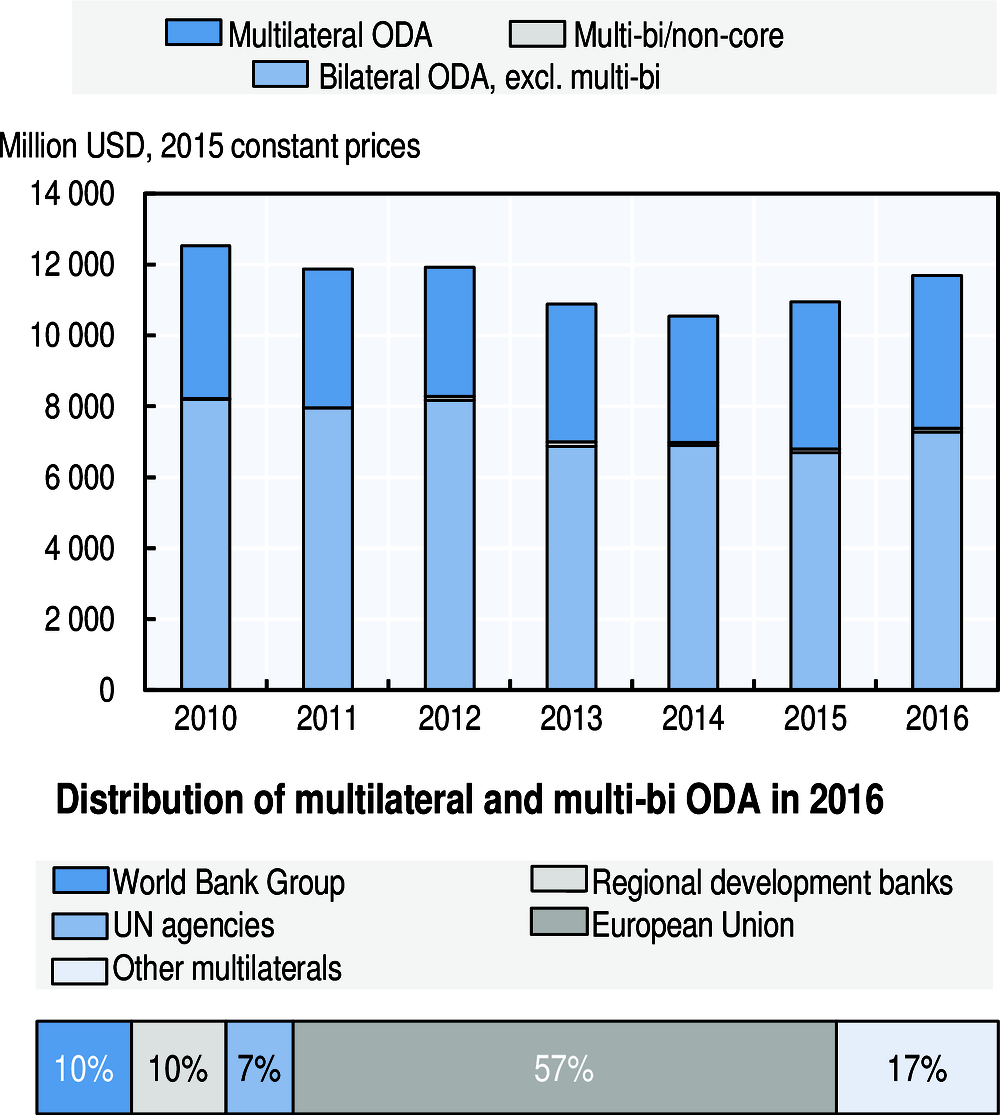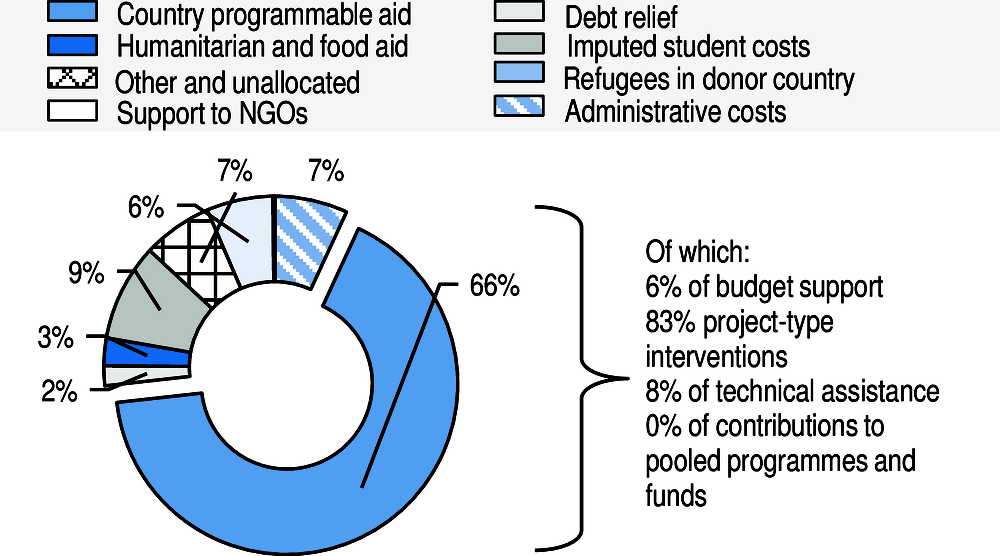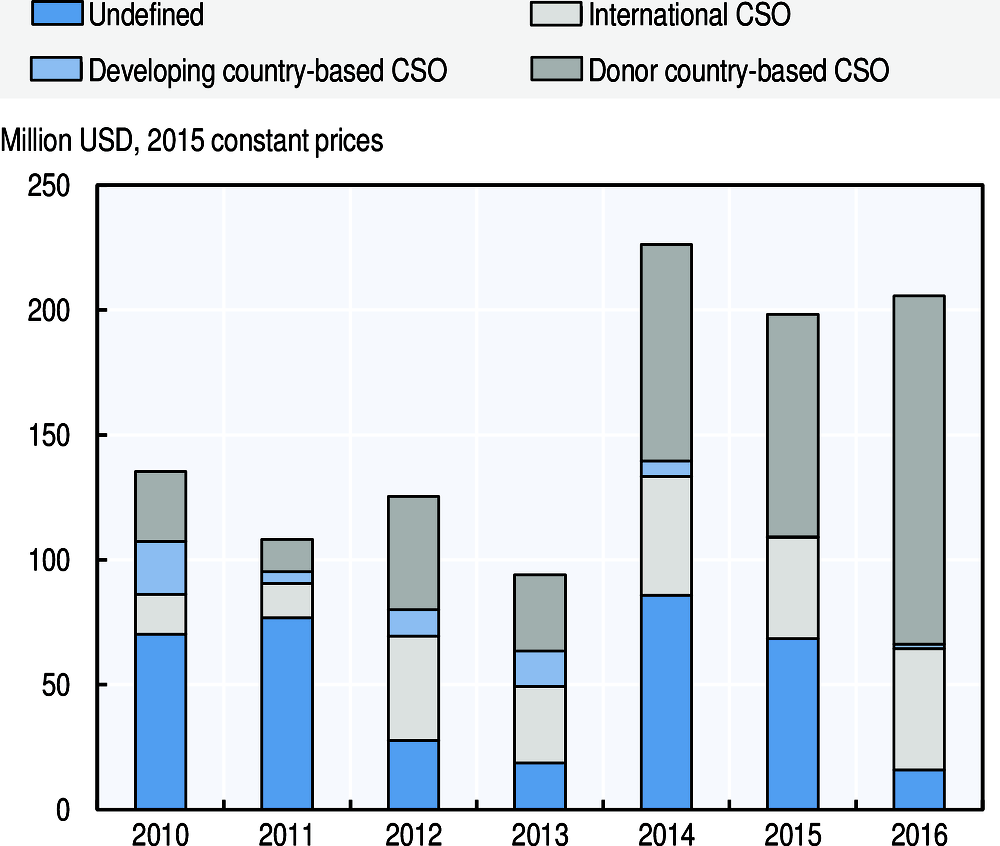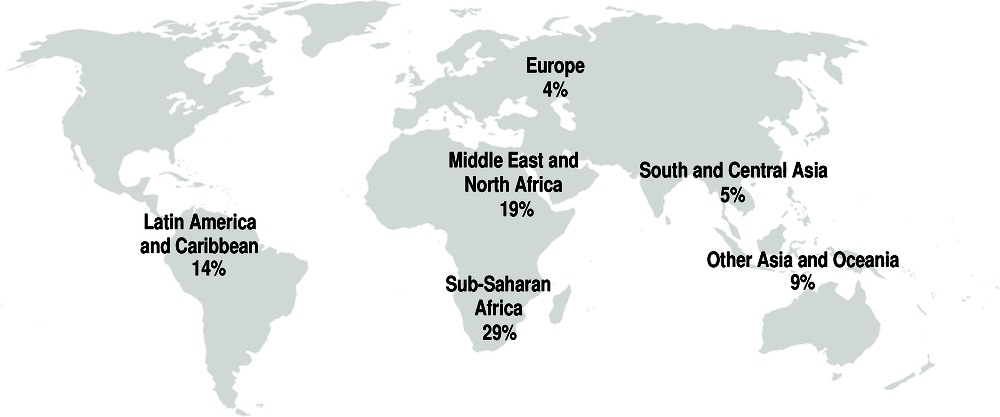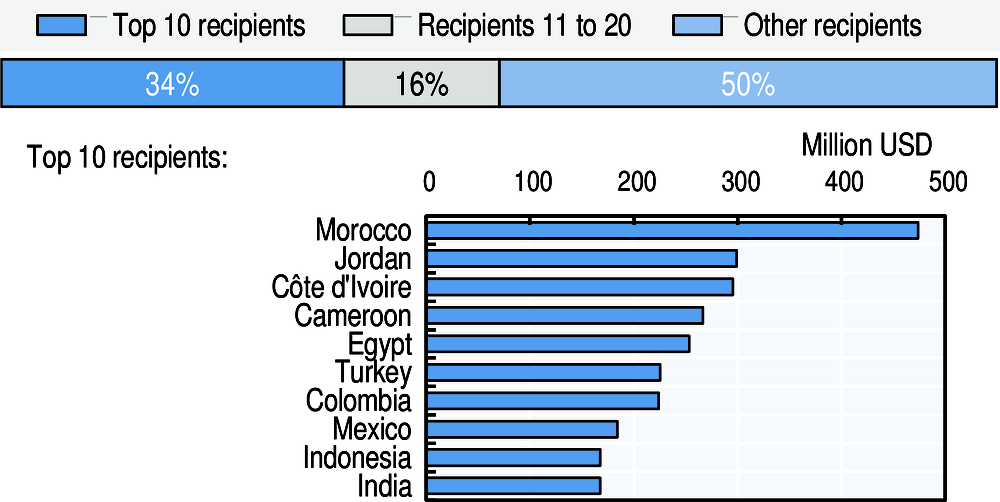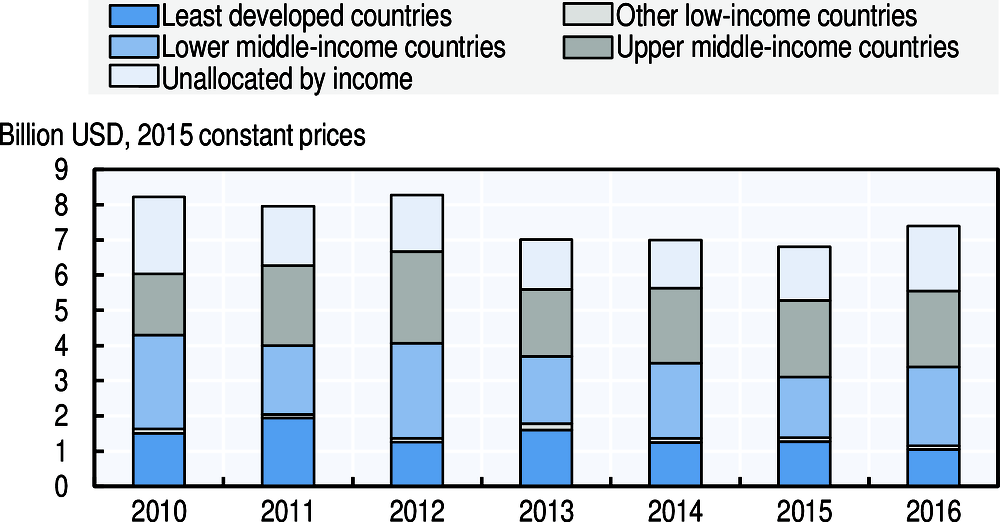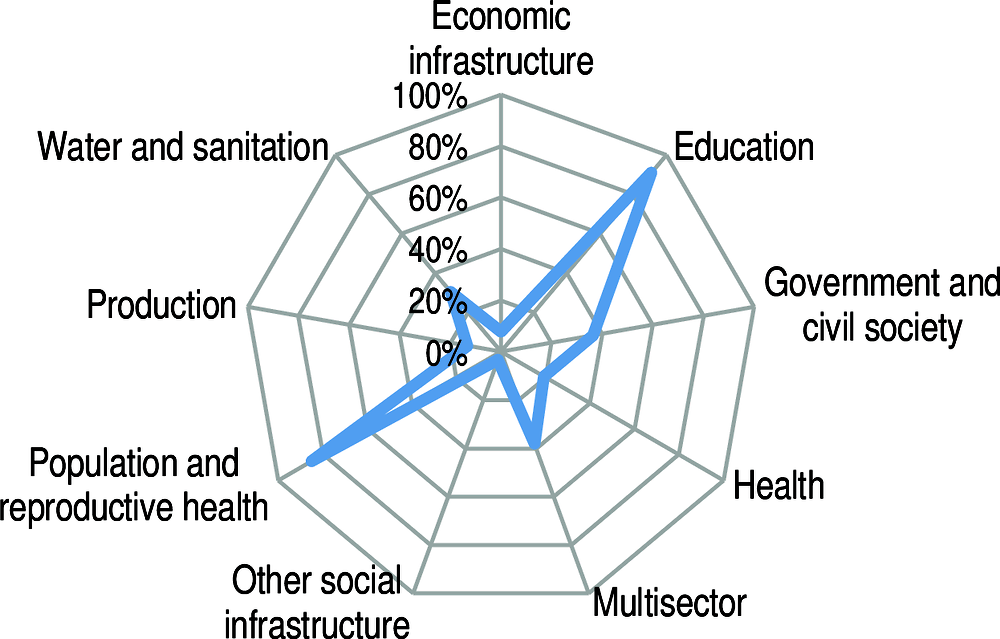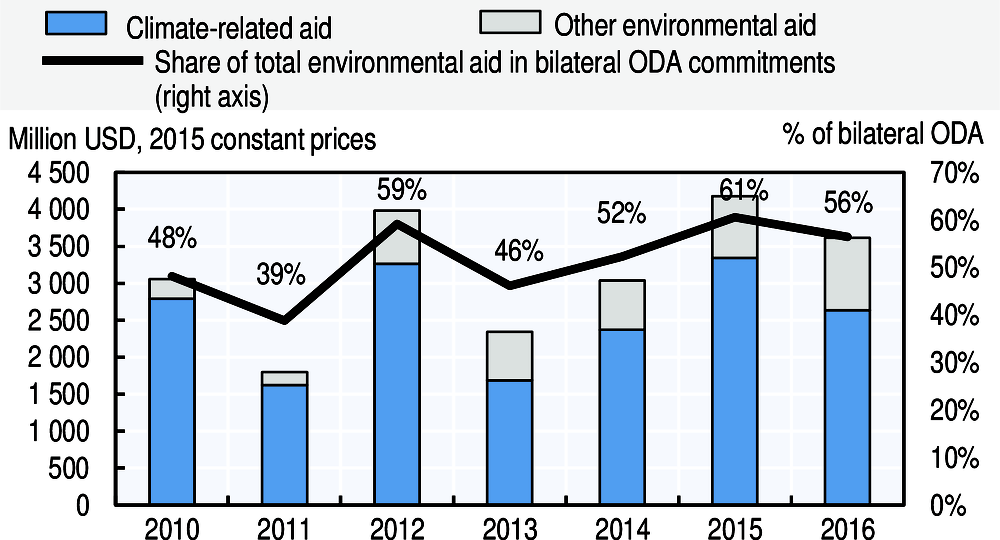France
Leaving no one behind: France’s approach and priorities
France has fully endorsed the 2030 Agenda, committing itself to leave no one behind, in the conclusions of the 2016 and 2018 Committee for International Cooperation and Development. In particular, to deliver on this commitment, the Agence francaise de développement (AFD) has set a target of having a “100% social link”, meaning that every project it finances should contribute to reinforcing social links, reducing inequalities, and enhancing access to social services and culture, with a special focus on gender equality and access to education for youth.
According to France, delivering on the principle to leave no one behind has the potential to boost inclusivity and effectiveness and to contribute to reducing inequalities within developing countries. At the same time, it believes that least developed countries should remain at the core of development co-operation efforts. A key challenge to success in leaving no one behind are the cultural and social constraints to ensuring that specific categories of the population are included in economic and social development.
France mainstreams a leave no one behind lens through the AFD’s diagnostic tools such as its “sustainable development analysis and opinion mechanism”. The AFD has also adopted an environmental and social risk management policy based on the World Bank’s Environment and Social Standards.
Financial flows from France to developing countries
France’s performance against commitments for effective development co-operation
France’s official development assistance
In 2017, France provided USD 11.4 billion in net ODA (preliminary data), which represented 0.43% of gross national income (GNI) and a 14.9% increase in real terms from 2016, due to an increase in bilateral lending and contributions to multilateral organisations (UN bodies in particular). The government has committed to achieve a 0.55% ODA/GNI ratio by 2022 and France is committed, at the European level, to collectively achieve a 0.7% ODA/GNI ratio by 2030. In 2017, in-donor refugee costs were USD 566 million and represented 5% of France’s total net official development assistance (ODA), compared to 4.8% in 2016.
France’s share of untied ODA (excluding administrative costs and in-donor refugee costs) was 96.3% in 2016 (increasing from 95.6% in 2015), compared to the Development Assistance Committee (DAC) average of 81.2%. The grant element of total ODA was 83.4 % in 2016, lower than in 2015 (when it stood at 85.6%) and below the DAC compliance grant element norm of 86%. Loans amounted to 28.4% of gross ODA in 2016.
In 2016, 63.2% of ODA was provided bilaterally. France allocated 36.8% of total ODA as core contributions to multilateral organisations. In addition, it channelled 2.8% of its bilateral ODA for specific projects implemented by multilateral organisations (multi-bi/non-core).
In 2016, 66.4% of French gross bilateral ODA was programmed with partner countries. France’s share of country programmable aid was higher than the DAC country average (46.8%) in 2016. Project-type interventions made up 83% of this aid.
In 2016, USD 206.6 million of bilateral ODA was channelled to and through civil society organisations (CSOs). France’s ODA to and through CSOs remained stable between 2015 and 2016 as a share of bilateral aid (it was 2.9% in 2015 and 2.8% in 2016).
In 2016, bilateral ODA primarily focused on sub-Saharan Africa, North Africa and South America. In 2016, France allocated USD 2.1 billion to sub-Saharan Africa, USD 997.1 million to North Africa and USD 623.5 million to South America.
In 2016, 34.4% of bilateral ODA went to France’s top 10 recipients. The French government has committed that at least 50% of France’s grant ODA should go to its 17 priority partner countries, all but one in sub-Saharan Africa. In 2016, however, none of these priority countries was on the list of top 10 recipients. France’s support to fragile contexts reached USD 2 billion in 2016 (27% of gross bilateral ODA). Support to fragile contexts consisted mainly of project-type interventions (73%) and scholarships (10%).
In 2016, 14.3% of gross bilateral ODA was allocated to least developed countries (LDCs), amounting to USD 1.1 billion. This is a decrease from 2015 (when it stood at 18.8%), and is lower than the 2016 DAC average of 21.9%. Lower middle-income countries received the highest share of bilateral ODA in 2016 (30.3%).
At 0.08% of GNI in 2016, ODA to the LDCs was lower than the UN target of 0.15% of GNI.
In 2016, 38.3% of France’s bilateral ODA was committed to social infrastructure and services, amounting to USD 3.2 billion, with a strong focus on education (USD 1.4 billion) and water and sanitation (USD 845.6 million). Humanitarian aid amounted to USD 153 million. In 2016, France committed USD 156.3 million (2.4% of bilateral allocable aid) to the mobilisation of domestic resources in developing countries. It also committed USD 2.4 billion (38% of bilateral allocable aid) to promote aid for trade and to improve developing countries’ trade performance and integration into the world economy.
USD 1.5 billion of bilateral ODA supported gender equality. In 2016, 28.5% of French bilateral allocable aid had gender equality and women’s empowerment as a principal or significant objective, compared with the DAC country average of 36.5%. A high share of France’s aid to population and reproductive health and education focuses on gender.
USD 3.6 billion of bilateral ODA supported the environment. In 2016, 56.4% of French bilateral allocable aid supported the environment and 41.1% (USD 2.6 billion) focused on climate change, compared with the respective DAC country averages of 33% and 25.7%.
Note to reader: Annex B provides “Methodological notes on the profiles of Development Assistance Committee members”.

